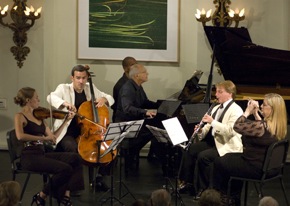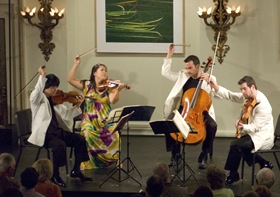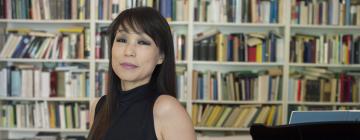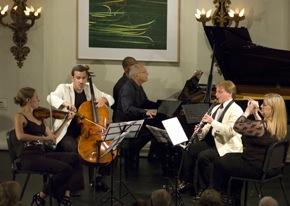Music@Menlo continued its traversal of geographically inspired programs Saturday night with a focus on music from Vienna. Looking at the festival’s range of programs, this approach seems, as often as not, to raise a new banner under which the organization presents a fair amount of familiar repertoire. Last weekend’s thrice-repeated program, heard in its opening iteration at St. Mark’s Episcopal Church in Palo Alto, continued this approach, though two less familiar works were the most memorable and moving.
Offering a survey of Vienna’s musical legacy in one night will, of course, offer endless choices and leave enormous gaps, but among the four pieces offered, the two more unusual choices of repertory on the program provided the greatest rewards. This was not only because they offered something new, but also because the performances yielded both intimacy and depth.

One most appealing rarity was Haydn’s Keyboard Concertino in C Major, Hob. XIV: 11. Probably meant for a private chamber setting rather than a concert hall, the work represents a little-known idiom in which the composer was typically productive, a miniconcerto for keyboard and a small chamber group — in this case, two violins and a cello. Festival Coartistic Director Wu Han was the pianist, and she brought out both the charm and the depth of the work, with an empathy for the Classical style and for her fellow players. Although the piece is nominally a spotlight for a soloist, the small ensemble and the clarity of the music created a feeling more of a meeting of equals, with communicative playing all around.
Turning to the Second Viennese School, the program provided a kind of two-for-one deal, perhaps to avoid tilting the program too much toward the modern, with Webern’s rarely heard arrangement of Schoenberg’s Op. 9 Chamber Symphony. Recast for Schoenberg’s “Pierrot” ensemble of piano, violin, cello, clarinet, and flute, the piece worked well on the heels of a preceding Beethoven string quartet, as listeners could hear traces of the earlier era’s cadences, rhythms, and dramatic gestures, even in Schoenberg’s movement toward atonality. It also highlighted Webern’s brilliance as an orchestrator whose beautiful textures and lucid counterpoint drove a performance that seemed no less dramatic for its reduced forces.
It was a privilege to hear pianist Gilbert Kalish in this ensemble, as this great chamber player’s crisp, expressive playing was both distinct and carefully blended with that of his colleagues. Aside from one concern — the strings and piano occasionally overbalancing the winds — the entire ensemble came together for an electrifying performance, unified in spirit and gesture. Violinist Lily Francis, a recent Curtis Institute and New England Conservatory graduate who is achieving a bit of rising-star status, was particularly magnetic, delivering a performance that conveyed raw emotion through refined, gorgeous playing.
Banking Its Fires Till the End
The Miró Quartet, which volunteered some of its players for the Schoenberg and Brahms works on the program, contributed a performance of Beethoven’s “Serioso” Quartet in F Minor, Op. 95. The Miró brought its rich collective sound and remarkable unity of phrasing to the task at hand. But through most of the piece, the music’s many inventive turns and surprises (and there are lots of them) felt a little flat. There were no wrong moves, exactly, but no sense of risk, either. Not until the final movement did the playing really catch fire, and I would have gladly traded some of the group’s amazing sense of ensemble for more heat all the way through.

The evening ended with a reading of Brahms’ Sextet No. 2 in G, Op. 36, that stood out in every way I might have wished for. In their journey through the work, the ensemble — violinists Erin Keefe and Jorja Fleezanis, Miró violist John Largess along with Francis moving to the viola, and cellists David Finckel (Music@Menlo’s other coartistic director) and Ralph Kirshbaum — dug into the composer’s mix of rhythmic and harmonic invention, as well as each movement’s evolving mood. This was a performance that delineated both the music’s architecture and its emotional world. Keefe, another wonderful young player, was especially luminous, as her affecting performance provided the heart of the work.

